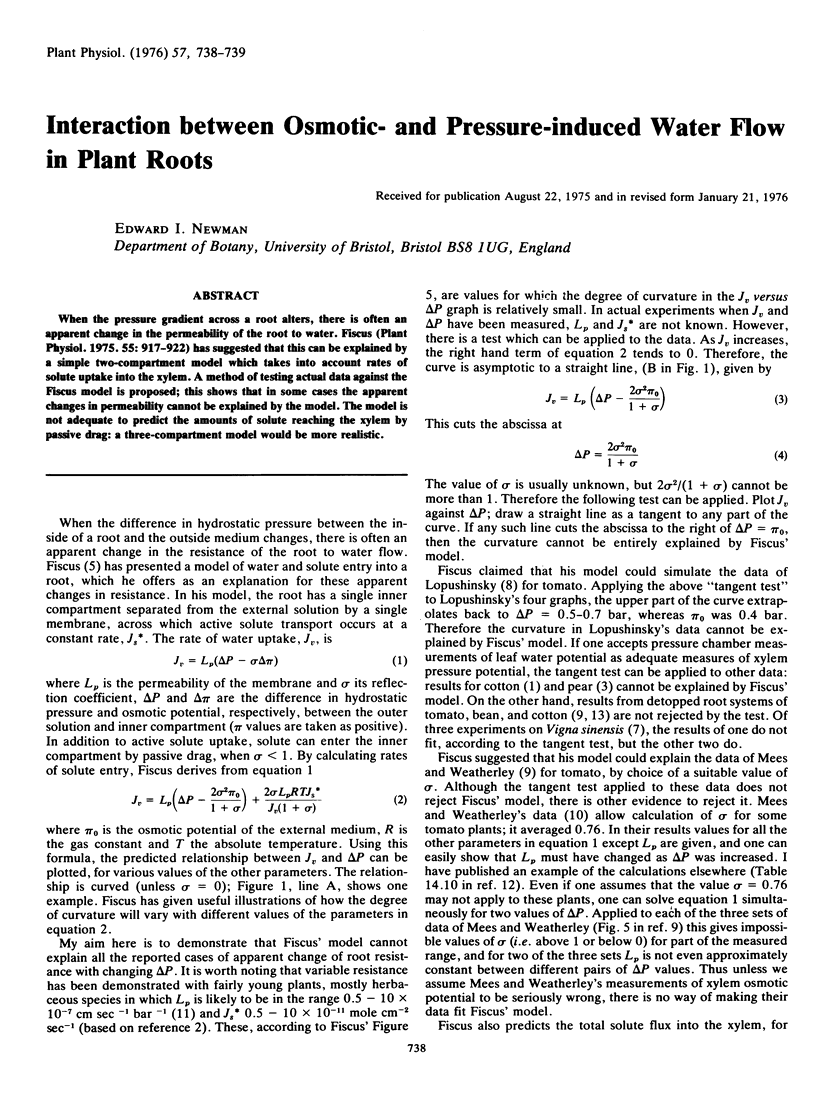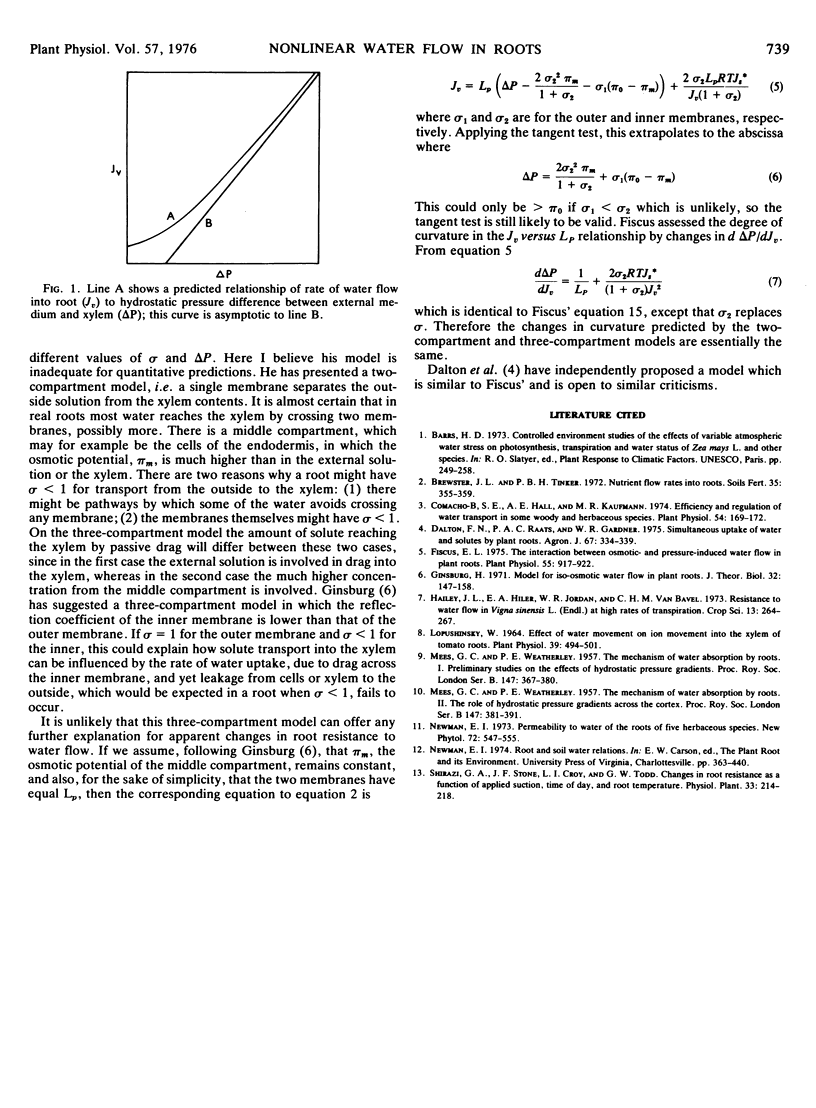Abstract
When the pressure gradient across a root alters, there is often an apparent change in the permeability of the root to water. Fiscus (Plant Physiol. 1975. 55: 917-922) has suggested that this can be explained by a simple two-compartment model which takes into account rates of solute uptake into the xylem. A method of testing actual data against the Fiscus model is proposed; this shows that in some cases the apparent changes in permeability cannot be explained by the model. The model is not adequate to predict the amounts of solute reaching the xylem by passive drag: a three-compartment model would be more realistic.
Full text
PDF

Selected References
These references are in PubMed. This may not be the complete list of references from this article.
- Camacho-B S. E., Hall A. E., Kaufmann M. R. Efficiency and regulation of water transport in some woody and herbaceous species. Plant Physiol. 1974 Aug;54(2):169–172. doi: 10.1104/pp.54.2.169. [DOI] [PMC free article] [PubMed] [Google Scholar]
- Fiscus E. L. The Interaction between Osmotic- and Pressure-induced Water Flow in Plant Roots. Plant Physiol. 1975 May;55(5):917–922. doi: 10.1104/pp.55.5.917. [DOI] [PMC free article] [PubMed] [Google Scholar]
- MEES G. C., WEATHERLEY P. E. The mechanism of water absorption by roots. I. Preliminary studies on the effect of hydrostatic pressure gradients. Proc R Soc Lond B Biol Sci. 1957 Dec 3;147(928):367–380. doi: 10.1098/rspb.1957.0056. [DOI] [PubMed] [Google Scholar]
- MEES G. C., WEATHERLEY P. E. The mechanism of water absorption by roots. II. The role of hydrostatic pressure gradients across the cortex. Proc R Soc Lond B Biol Sci. 1957 Dec 3;147(928):381–391. doi: 10.1098/rspb.1957.0057. [DOI] [PubMed] [Google Scholar]


